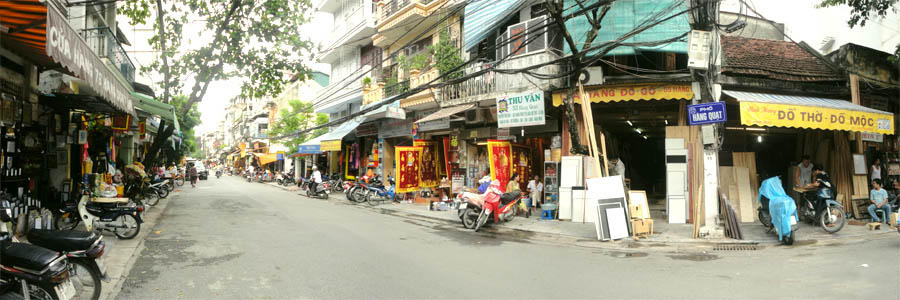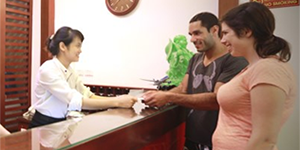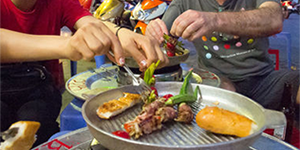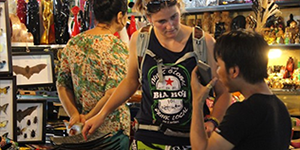Hanoi Streets

Ma Vi Street is one of the exceptions in the Old Quarter that does not contain the word of “Hang” in its name. “Hang” means the street merchandises. Each street has its own merchandise thus having different names respectively.
Ma Vi Street lies to the West connecting to Hang Non Street at its end. Its name derives from the street trade. Many households here made and sold stage clothing for traditional stage arts such as tuong and cheo. Also the clothing was used in holy festivals. Other merchandises include embroidery work- i.e flag, end flags and umbrellas. Some stage props on sale were made from horse tail hair thus giving the street its name of Ma Vi which means Horse Tail in Vietnamese.
History Spots
Dau Temple, literally Mulberry Temple, also has the name of Thuan My. It is now the house numbered 64. Far in the past, there was a large mulberry field surrounding the temple. Thus, people call it Dau Temple.
The house of number 74 was once the communal house of the whole village where people honored the god village of Ban Canh.
The house of number 43 is now the community school of Nguyen Van To. This was one of the earliest private schools in Hanoi. Its original name was Tri Tri which honored the power of knowledge.
The house of number 21 was the residence of the famous business man and artist of Nghiem XuanHuyen. He was the owner of the publishing house of Rang Dong. Also, he was the editor-at-large of two newspapers. The first one was BacKy TheThao about the sport news in the North. It was established in 1930. His other newspaper was Con Ong from 1936. This one is a sarcasm op-ed page criticizing the French colony and their servants. He was the patronage and father-in-law of the acclaimed writer of Van Cao who composed the national anthem for Vietnam.




